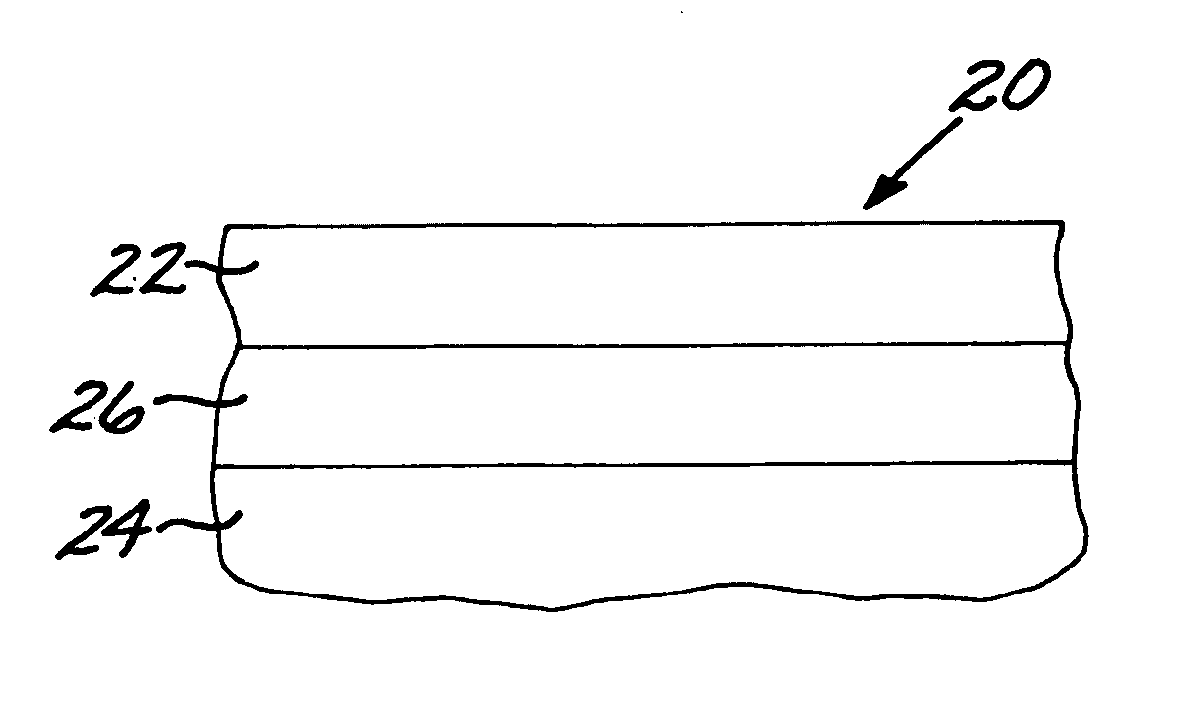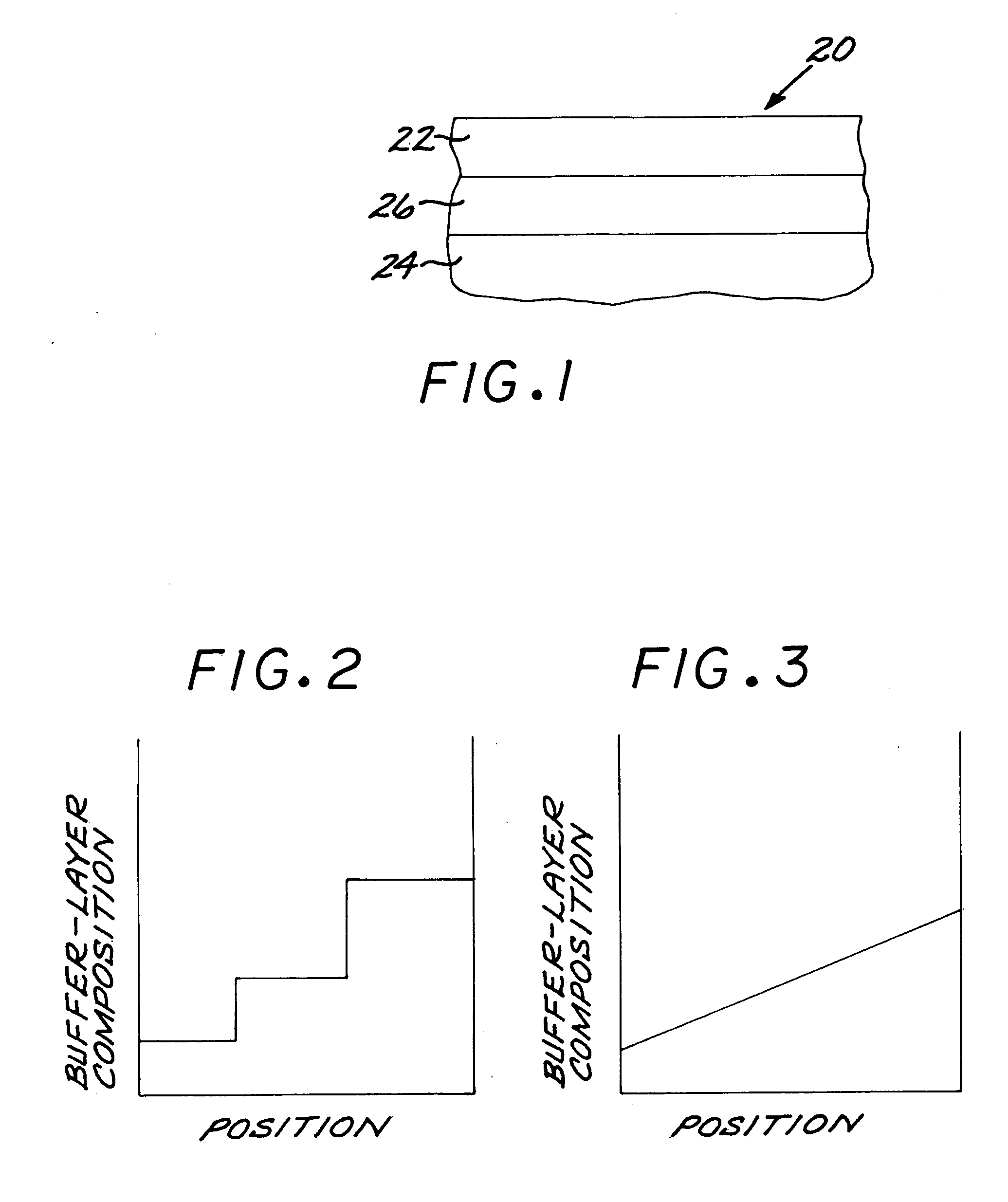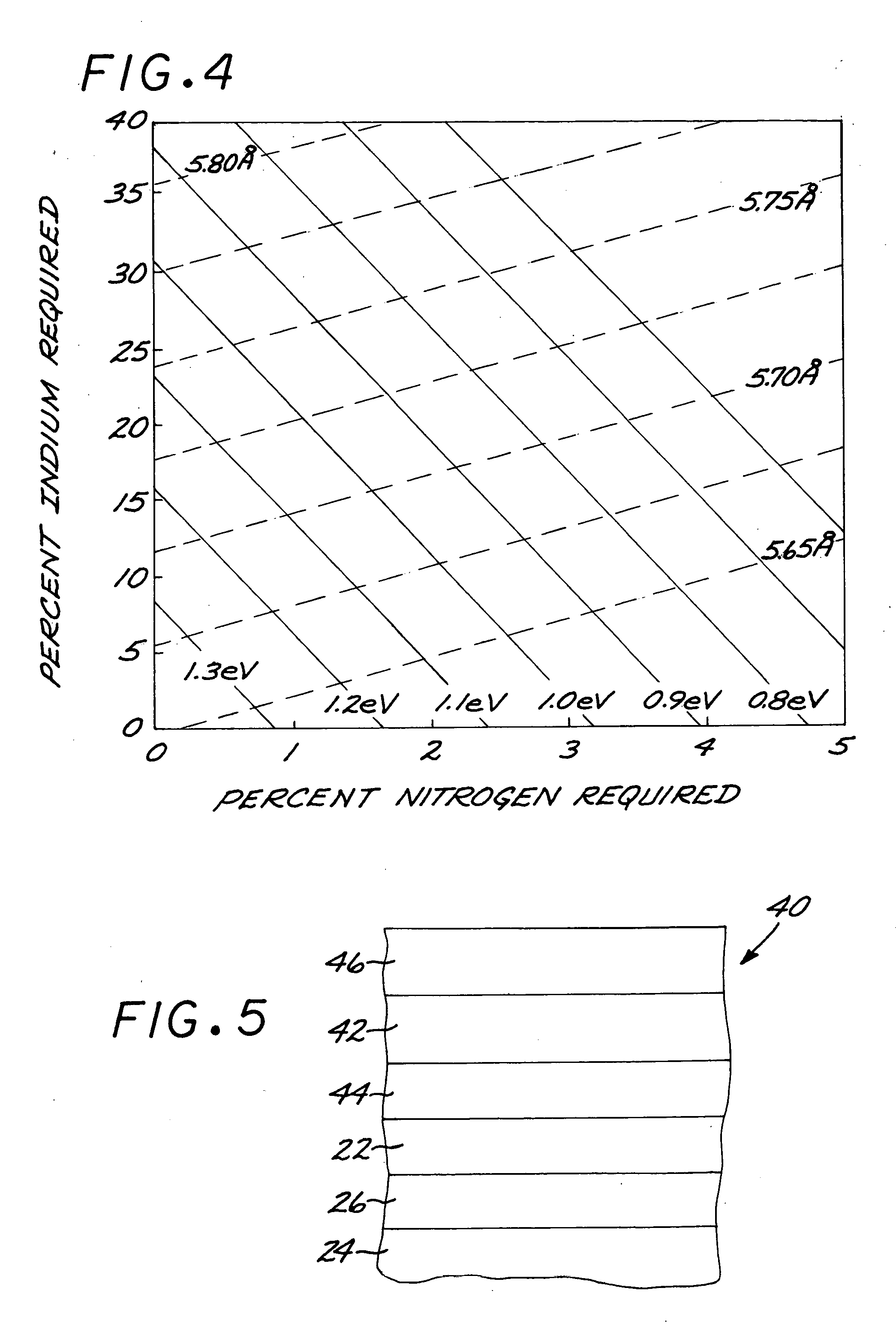Multijunction solar cell having a lattice mismatched GrIII-GrV-X layer and a composition-graded buffer layer
a solar cell and composition-grade technology, applied in the direction of photovoltaics, electrical devices, semiconductor devices, etc., can solve the problems of reducing the requirement of nearly perfect lattice matching, and the degradation of the overall efficiency of the solar cell, so as to achieve the effect of optimizing performan
- Summary
- Abstract
- Description
- Claims
- Application Information
AI Technical Summary
Benefits of technology
Problems solved by technology
Method used
Image
Examples
Embodiment Construction
[0030]FIG. 1 depicts a multijunction solar cell 20 having a first photoactive subcell layer 22 with a first-subcell lattice parameter and a composition comprising at least one Group III element, at least one Group V element other than (nitrogen, phosphorus), and (nitrogen, phosphorus). As used herein, the notation “(nitrogen, phosphorus)” or “(N,P)” means nitrogen or phosphorus or a combination thereof. For applications to be discussed subsequently, the first photoactive subcell layer 22 has a bandgap of from 0.7 to 1.4 eV, more preferably from 0.9 to 1.1 eV, and most preferably about 1.0 eV. Preferably, the at least one Group III element comprises gallium and indium, and the at least one Group V element other than (nitrogen, phosphorus) comprises arsenic, and (nitrogen, phosphorus) is nitrogen. That is, the first photoactive subcell layer 22 preferably is of the general form GaInAsN. The first photoactive subcell layer 22 is sensitive to a first-photoactive-subcell-layer wavelength...
PUM
 Login to View More
Login to View More Abstract
Description
Claims
Application Information
 Login to View More
Login to View More - R&D
- Intellectual Property
- Life Sciences
- Materials
- Tech Scout
- Unparalleled Data Quality
- Higher Quality Content
- 60% Fewer Hallucinations
Browse by: Latest US Patents, China's latest patents, Technical Efficacy Thesaurus, Application Domain, Technology Topic, Popular Technical Reports.
© 2025 PatSnap. All rights reserved.Legal|Privacy policy|Modern Slavery Act Transparency Statement|Sitemap|About US| Contact US: help@patsnap.com



